
Topics
Guests
- Iyad Nasrspokesperson for the International Committee of the Red Cross in Gaza. Special thanks to Jacquie Soohen of Big Noise Films
We look back at the glaring lack of access to emergency care for the thousands of people seeking urgent medical help during Israel’s three-week military operation one year ago. Iyad Nasr, the spokesperson for the International Committee of the Red Cross in the bombed-out Tel al-Hawa neighborhood of Gaza City, describes the ICRC’s operations. [includes rush transcript]
Transcript
AMY GOODMAN: We end this segment on Gaza with a reminder of the glaring lack of access to emergency care for the thousands of people who were seeking urgent medical help during Israel’s three-week military operation a year ago.
Earlier this year, Democracy Now!’s Anjali Kamat caught up with a spokesperson for the International Committee of the Red Cross in the bombed-out Tel al-Hawa neighborhood of Gaza City. Iyad Nasr described the ICRC’s operations in Gaza during Israel’s three-week military assault.
IYAD NASR: ICRC was not allowed to reach the victims. No place in Gaza was safe. Ambulances, ICRC, we could not move without a green light from the Israeli authorities. And even when we were given the green light, we were told, “You have to be careful. Things might happen. Explosions can happen.” What does it mean? What guarantee I am getting from a military operation, from operators of military activities without proper guarantees?
And most often also, people were asking for evacuation at the same time in large numbers. Hundreds of people were having the same scenario. It’s not an incursion into Beit Hanoun or Jabalia or Shouka in Gaza. It’s an incursion — it’s a military operation all over Gaza. How can any humanitarian organization respond to such large-scale operation while being limited, while being denied access? Most of the time these people wanted to leave.
Like in this neighborhood, if you go around, you will see that all the houses — there is no one single exception — sustained injuries, sustained a smoke, heavy smoke, or explosions or fire into their buildings. We could not bring fire brigades. We were not allowed to bring the fire brigades. We were not allowed to move with ambulances of the PRC’s to rescue people. And families, they were calling, “Evacuate us to a safer place.” But where to take them? Even if ICRC managed to reach to these people calling, to take them where? To which place? There was no place called safe in Gaza to move these people to.
AMY GOODMAN: Iyad Nasr of the International Committee of the Red Cross, describing what was happening during the three-week military assault by Israel on Gaza a year ago. Special thanks to Anjali Kamat and Jacquie Soohen of Big Noise Films.

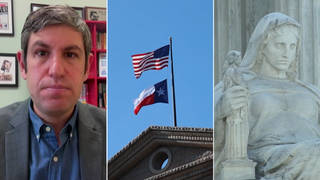
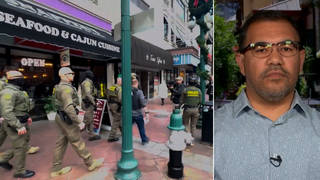
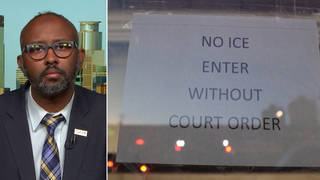
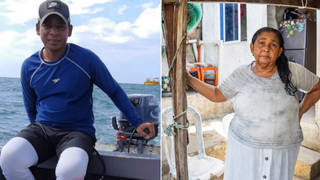





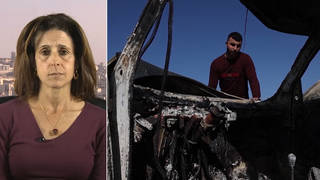

Media Options